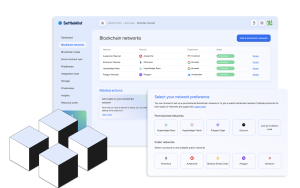Technology has allowed students to further their education even if they can’t physically attend classes. It has also opened up educational opportunities for people who work full-time, children with special needs, and those living an alternative lifestyle due to a health condition or travel restrictions.
However, implementing effective remote learning requires training teachers in pedagogies that support engaging virtual instruction and making the tools available to all students.
Telecommunications
Educators can use telecommunications to connect students with the curriculum in meaningful ways. For example, a geography professor can take students on a virtual tour of the Grand Canyon or a history teacher can give a lecture from the corridors of the White House.
In addition, online tools can fortify collaboration and communication abilities that are crucial in today’s professional sphere. Video conferencing tools allow remote learners to engage in face-to-face interactions, while free online storage solutions enable students to collaborate on projects in real time.
However, despite its many benefits, the Covid-19 pandemic is also making it clear that remote learning is not without its challenges. Achieving high-quality virtual instruction requires a lot of work from teachers and students alike, including training teachers in pedagogies that promote engaging virtual instruction and ensuring all students have access to the technology they need to succeed.
Video conferencing
Video conferencing technology brings the classroom into students’ homes, where it can be more accessible than in-person classes. It also brings the world into students’ lives: guest speakers who live too far to attend school can join a class, virtual tours of locations too distant for real-world field trips are possible, and international collaboration becomes easier than ever.
The visual and audio stimuli of live video conferencing sessions help to keep students engaged, increasing their retention of course material. Video conferencing can even provide instructors with instant feedback on students’ assignments and assessments, which encourages accountability for learning.
As remote work continues to grow in popularity, video conferencing systems are evolving to meet the needs of both businesses and individuals. Enhanced features such as improved accessibility for the disabled, AI-driven personalized learning recommendations and VR-based virtual classrooms are just some of the innovations to look forward to.
Learning management systems
The structure of remote learning varies between school districts, but it usually revolves around an online homebase or a learning management system such as Google Classroom which teachers use to disseminate news, assignments and feedback. Choosing an easy-to-use and reliable learning management system is key for students to engage in remote learning effectively.
LMS systems can support a variety of educational technologies and modalities, such as gamification, virtual reality or social media integrations. They can also include advanced features like SCORM compliance (a set of standards that governs how content is packaged and communicated to an LMS at run-time), data analytics and personalization for learners.
Students need to be able to access their education on all types of devices, including laptops, tablets and smartphones. For this reason, an LMS should be browser-based and mobile-responsive.
Educational apps and platforms
While technology enables students to interact with the curriculum outside of the classroom, it can be difficult for teachers and students to maintain engagement. That’s why it’s important to create educational apps that enable a rich and immersive learning experience.
College students, for instance, tend to be more tech savvy and can manage fully online classes better than younger age groups. These classes can be pre-recorded or a mix of live, video conversations and discussion boards.
In addition to leveraging the right tools, it’s critical to train teachers in effective pedagogies that support engaging virtual instruction and make it widely available. This will ensure students have access to rigorous content and achieve similar educational outcomes to their peers who attend class face-to-face. This will also help mitigate socially stultifying effects of remote learning.
Virtual reality
VR can be used for virtual classrooms, giving students a sense of community and presence. It can also help them experience situations that might happen in their field of study, such as medical students practicing surgery simulations.
Students can use VR to visualize complex concepts, such as atomic structures or mathematical models. Commercial HMDs such as the HoloLens can also provide haptic feedback, adding a more sensory element to virtual environments.
VR can transport students to different cultural, historical and geographic locations, promoting global awareness and fostering empathy. It can also be used to train employees in safety-critical fields, such as operating a crane or driving a car. In addition, it can be used to hold meetings and training sessions without the need for travel.






More Stories
Decentralized Professional Networks: Your Career, Actually Owned by You
How Introverts Can Build Authentic Connections in Digital Networking
Mastering Virtual Networking: Tips for Building Strong Online Connections